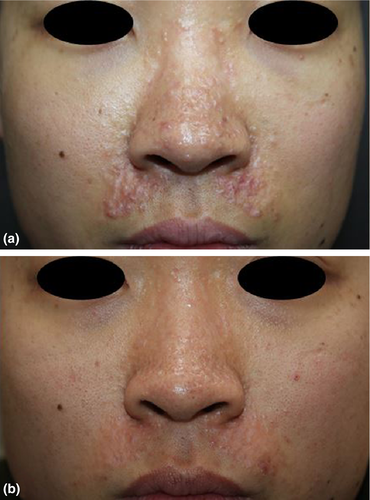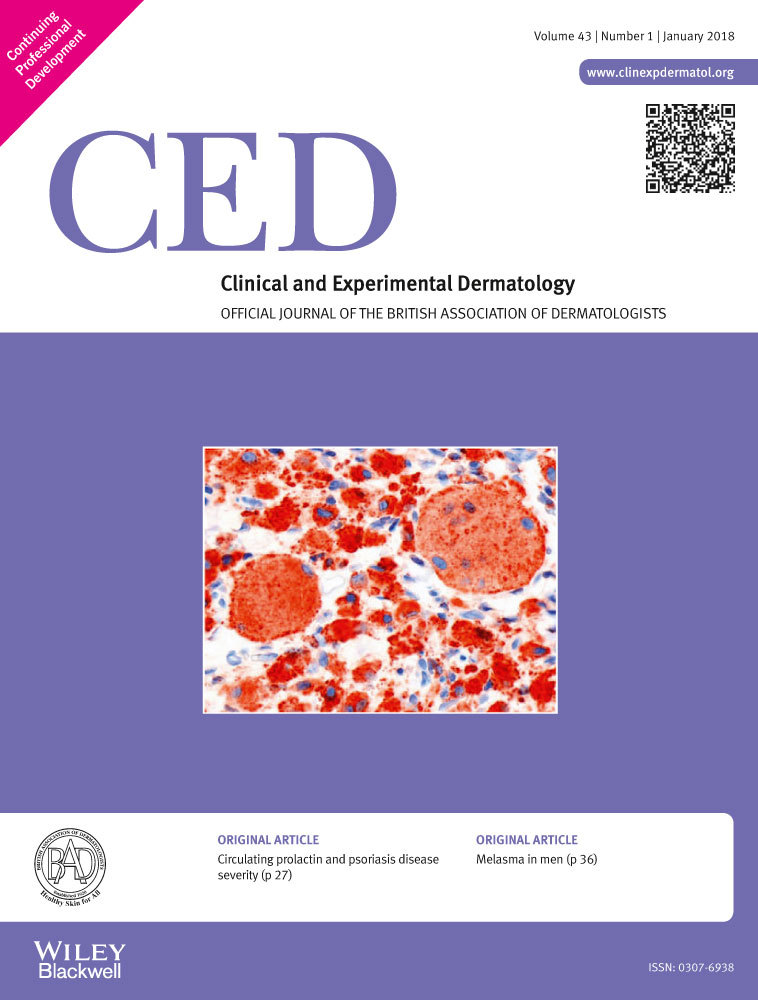Successful treatment of trichoepithelioma with a novel insulated, monopolar, radiofrequency microneedle device
Trichoepithelioma is a rare, benign skin disorder that shows follicular germinative differentiation.1 The skin lesions of trichoepithelioma mostly develop on the nose, upper lips and cheeks. Histopathologically, trichoepitheliomas present as sharply circumscribed, symmetrical, dome-shaped lesions composed of nests of monomorphic basaloid cells surrounded by abundant fibrous stroma. The recommended treatment option for solitary trichoepithelioma is surgical excision; however, this is not feasible for multiple lesions.
Radiofrequency (RF) microneedle devices disperse energy at the depth of the needle tip.2 An insulated needle without tip insulation can deliver uniform heat at a controlled depth without unwanted epidermal damage. To our knowledge, there have been no reports of multiple trichoepithelioma treatment with a RF device. We report cosmetic improvements in trichoepithelioma with a novel RF microneedle device.
A 22-year-old man presented with multiple, small, skin-coloured papules on his nose and philtrum (Fig. 1a). The lesions had started as only a few papules on his nose during childhood and then began to multiply in his teenage years.

Histopathological examination revealed a well-circumscribed, multilobed, dermal tumour consisting of basaloid aggregation with abundant surrounding fibrous stroma. Although the papules were asymptomatic, they were cosmetically unacceptable to the patient, and RF ablation was chosen to minimize the recovery time.
Anaesthesia was administered by applying topical anaesthetic cream (EMLAs®; AstraZeneca, Wilmington, DE, USA) for 30 min. The patient was initially treated with a recently developed insulated RF microneedle device (AGNESⓇ; Gowoonsesang Cosmetics Co. Seoul, Korea) made up of I-type insulated needles.3 We applied a current at a frequency of 150 ms and power level intensity of 3 with the 1 MHz RF apparatus. Each papule received one RF pass, while papules > 3 mm received two passes at different spots. We repeated the treatment with the same parameters four times at 1-month intervals. After the fourth session, the lesions showed remarkable improvement (Fig. 1b). Post-treatment complications included mild erythema and stinging sensation, but these were minor and lasted less than a day. Furthermore, postinflammatory hyperpigmentation, epidermal burns and scar formation were not reported.
The patient was very satisfied with the results and there was no evidence of recurrence at the 1-year follow-up.
Trichoepitheliomas are benign hair follicle tumours most commonly derived from follicle bulbs.4 Reported treatment methods for adnexal tumours in the literature include surgical excision, cryotherapy, electrodessication and dermabrasion. Surgical removal of multiple tumours is clinically unfeasible and may leave scars. CO2 laser resurfacing can be employed as a destructive method, but it is associated with prolonged recovery time, oozing, and the risk of post-inflammatory hyperpigmentation or hypopigmentation, especially in Asian populations with dark Fitzpatrick skin phototypes.5
RF devices can overcome the disadvantages of pre-existing laser devices by offering enhanced tissue penetration and a more accurate focus.6 As this novel RF device has no effect on epidermal chromophores, it can be very useful for treating darker skin types without resulting in post-treatment hyperpigmentation.7 Sebaceous tissue has such high impedance that when applying RF energy inside the pilosebaceous unit, the heat leads to damage of the unit. The likely mechanism of trichoepithelioma destruction by monopolar RF devices is induction of the thermal coagulative zone inside the horn cyst via microneedle penetration of the fibrous stroma. The difference in electrical impedance between the epidermis (high) and the dermis (low) further increases the selectivity, thereby enhancing RF flow in the targeted dermal tissue.5
In conclusion, we expect this selective ablation effect to prevent recurrence, although emergence of new lesions still remains an issue.4 We propose the application of this novel monopolar RF microneedle device in the treatment of adnexal tumours, particularly trichoepithelioma. To our knowledge, this is the first report of such a case.




